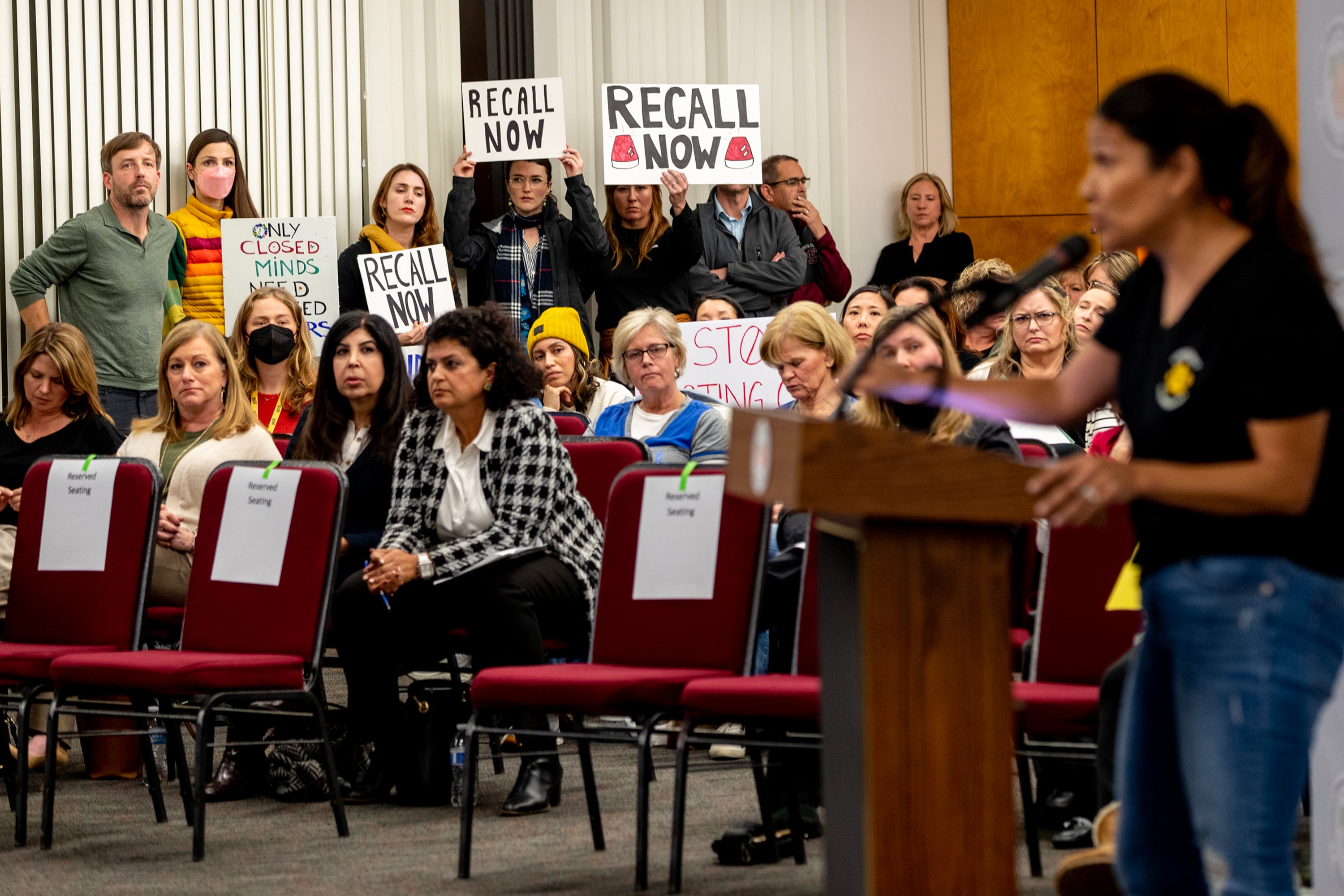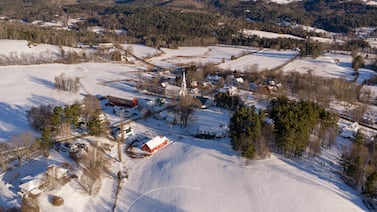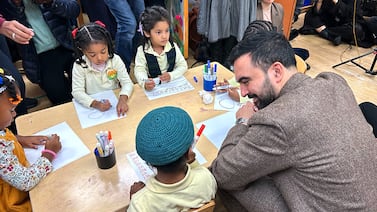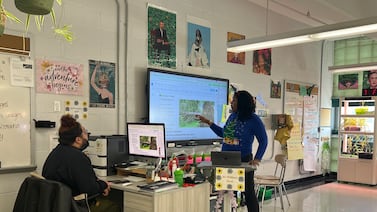Sign up for Chalkbeat’s free weekly newsletter to keep up with how education is changing across the U.S.
Heated debates on topics like LGBTQ rights, critical race theory, and book bans have dominated school board races in communities across the country and consumed hours of time at public meetings.
Those “culture war” debates also exacted real financial costs on districts, in the form of extra security at meetings, extra staff time to respond to voluminous public records requests, and staff turnover, a new study says.
The study, which involved a survey of 467 superintendents, attempts to put a dollar amount on the impact of all this conflict. Based on their answers, researchers estimated that districts nationwide spent $3.2 billion in the 2023-24 school year responding to “culturally divisive conflict.” Districts with high levels of conflict spent three times as much on average as districts with low levels of conflict.
Researchers surveyed superintendents across the country during the summer of 2024. Later, they carried out in-depth interviews with 42 of them to deepen their understanding of the survey results. Those superintendents described evening meetings that stretched into the early-morning hours and harassment campaigns that started online and reduced staff to tears.
“The length of board meetings has grown from 90 minutes to five and a half hours, and much of this time is taken up by speakers claiming that local schools ‘are indoctrinating kids’ with ‘ideologies around sexual health,’ even as the district uses state-approved curriculum,” one superintendent from a Western state told researchers.
Another superintendent said that after an incident in the school was featured on national conservative news websites, her office started to receive multiple calls a day, and the district’s social media channels were “effectively bombed … full of messages of hate.”
“My 60+ year-old administrative assistant was bombarded with phone calls to the point where she wanted to quit,” she told researchers. “She was crying because of the things that people would call and say into the telephone — none of whom were local.”
The biggest cost: staff turnover
Researchers sorted districts into low, medium, and high levels of conflict, based on how often the districts were challenged on library books, teaching about race and racism, and policies protecting LGBTQ students, as well as how often those conflicts featured threats, violent rhetoric, or misinformation.
To quantify the financial impact of cultural conflict, the researchers asked how much money each district had to spend on security, media and communication, social media support, legal fees, community relations, improving school board relations, government relations, and other areas to manage the impact of the conflicts.
The most significant financial impact associated with conflict was staff turnover: 29% of the superintendents reported that teachers and other members of staff had left the district due to the stress caused by the conflicts in the school boards. Even superintendents were affected: 42% of the district leaders who looked for a new job in the last year reported that their decision was related to school board conflict, stress, and politics, according to the recently released report.
While districts with low levels of conflict spent, on average, $148,190 last school year to replace departing staff, districts with high conflict spent, on average, $460,824.
High-conflict districts spent an average of $56,300 on legal fees and $40,600 on security, with indirect costs reaching even higher, the study found.
“The superintendents in the interviews spoke in such compelling ways about how the attacks on the public schools and educators created a stressful environment, where educators felt less committed and felt less public commitment toward them and hence were open to thinking about either leaving the profession or leaving that locality,” said John Rogers, education professor at UCLA and lead investigator on the study.
Rogers has led a number of other studies on the impact of political conflict generated by conservative groups such as Moms for Liberty. The most recent report aims to follow up on that previous research.
“I had been hearing and then seeing news reports as well that suggested that things were easing off a bit,” Rogers said. “That differed from what I had been hearing from superintendents, who were saying they were still having these issues.”
The survey found that more than a quarter of districts reported high levels of conflict in the last school year.
School board conflicts started flaring during the COVID-19 pandemic when some parent groups objected to policies such as mandatory masking. Later, their focus shifted to criticisms of how schools taught about race or policies regarding LGBTQ students.
The researchers differentiated the disruption caused by these conflicts from what they called healthy participation in public meetings. The unhealthy conflicts start, they wrote in the report, when the discussion “violates democratic principles, with a particular emphasis on threatening behavior, violent rhetoric, and the spread of misinformation.” The report calls for communities to “uphold norms of respect” as people debate issues.
“I think that civic energy brings strength and vitality to our public schools,” Rogers said in an interview. “We want to have multiple, different, diverse voices engaged in the process of figuring out what public schools should do and how they do it. I would draw a distinction, though, between encouraging participation in our public education system and fomenting conflict in an anti democratic way.”
How conflict takes money out of the classroom
The researchers’ goal with putting a cost on the culture wars was to call attention to how they are detracting from students’ learning and well-being. Money spent managing conflict is not available for programming and services, Rogers said.
The costs identified by the survey are related exclusively to the last year, but Rogers said that the long-term financial and social costs may be much larger.
“These conflicts have already undermined social trust in schools and educators,” Rogers said. “When that happens, it takes a while to rebuild it. So as we move forward, I think part of the project needs to be efforts to foster social trust between educators and the communities they’re serving at some level.”
Wellington Soares is Chalkbeat’s national education reporting intern based in New York City. Contact Wellington at wsoares@chalkbeat.org






